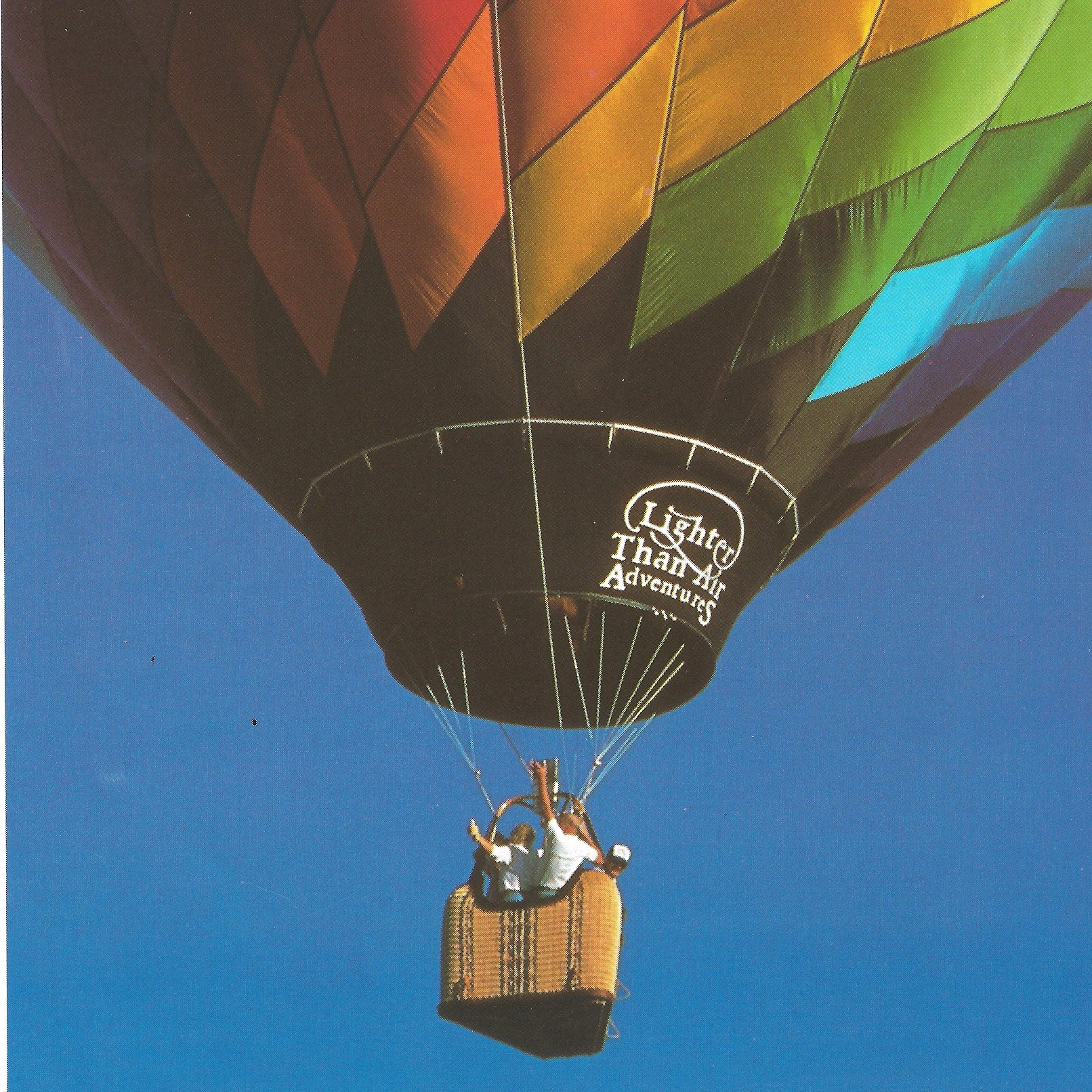
I wrote a column about my love of arpeggiated synths for music site Mess+Noise in 2011. Since then, I’ve observed the explosion in popularity of what has long been my favourite sound in music. In short, it’s a run of synthesizer notes that groove back and forth – sparkling, colourful, magical and mysterious. The audio equivalent of a palindrome. A mirror image wave form, glowing and sparking on loop like an enchanted roller coaster.
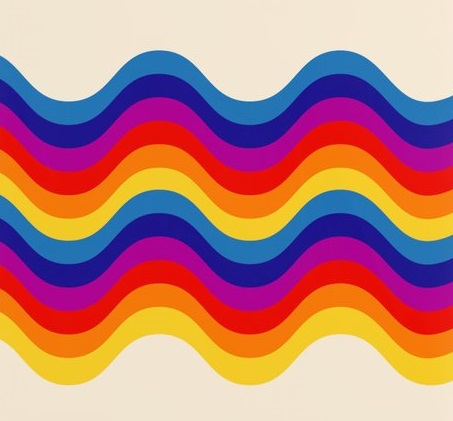
Here’s a quick example – the spritely business partying up the back of Lionel Richie’s Dancing On The Ceiling as demonstrated:
The most popular example of recent times is the Stranger Things opening theme which dropped in 2016. A good example of the slower, more agitating end of the arpeggiator spectrum.
Like the show (set in 1984), the theme was a throwback to a time when pop songs like The Never Ending Story and The Riddle (both released in ’84) and There Must Be An Angel (’85) had a melancholic sonic blowwave wafting ephemerally through the back of the mix.
In 2013 my favourite band Boards of Canada utilised their biggest batch of arpeggiated synths to date in a 1980s John Carpenter soundtrack tribute Tomorrow’s Harvest. Like Stranger Things, they took the warm cosmos of the Popcorn sound and reduced it to a steely, robotic chill.
To me, arpeggiated synths are the sound of infinity. The glorious, cascading, expanding universe of my imagination. The spiritual projection of what I imagine an all-star all-flying glittering afterlife to be. The Never Ending Story’s Fantasia meets Mario Kart’s Rainbow Road.
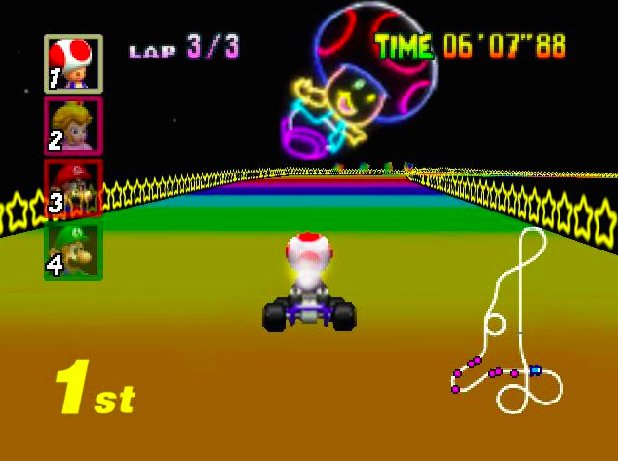
A frosted, pulsing rainbow run.
Echo nebulas, rebounding through the galaxy.
Fireflies of sound, synchronised like hexagons.
In 2011 arpeggiated synths were thin on the ground in alternative music. There was my favourite song of all time Infinity by Guru Josh, in which he synth-bombed a whole decade with his audacious lyrics and a (count it) two minute piano solo. In grade ten I requested Infinity as part of my ‘Hi 5’ favourite songs of all-time played by Michael Tunn on Triple J! For a long time the only copy I had of the extended mix (which wasn’t on the CD album) was the cassette recording from the radio, including the bump where I accidentally pressed record.
Infinity contains what I believe to be the best 20 seconds of recorded music, ever. [2:06 – 2:25 of the 12” version]
For the rest of the nineties the only place to find arpeggiated synths was in remixes of obscure techno songs like Pizzaman’s Happiness. 2000 marked an indie-rock retro explosion as Grandaddy brought the arpeggiator love on their landmark album The Software Slump. Tracks such as Crystal Lake were striking for the juxtaposition of synth used in a rock song. (The origins of which could be traced back to 1972’s landmark single Virginia Plain by Roxy Music, the same year that Popcorn was released. Pink Floyd’s Dark Side Of The Moon would appear the following year). Radiohead, having successfully married computers on Kid A were soon joined by Wilco with Heavy Metal Drummer and in five years LCD Soundsystem would take the dance/rock fusion full circle.
If xylophone is “the music you hear when skeletons are dancing” (Homer Simpson) then arpeggiators are the sound of a unicorn galloping.
Sometimes I’m asked whether I’ve ever wanted to make my own synth music. Unfortunately I’ve never afforded my own machine to play with. It’s a sweet dream with a long tail. I picture myself locked away in a strawberry-lime studio with lava lamp, buggy posters and velour robe, crafting my own downtempo ambient electronica like a sporty Tasmanian Jean-Michel Jarre.
In 2012 I made an unreleased album working with Melbourne cult-electro wildman SPOD (Brent Griffin) and my favourite psychedelic songwriter Richard Cartright of Sydney’s Richard In Your Mind. SPOD had a vintage Micromoog, the kind of which Popcorn was no doubt composed on. It looks like the dashboard of Dr Who’s Tardis and is about as abstract to operate.

No ‘demo’ button here. You twist knobs and dials, squashing and squelching the soundwaves like a lightsaber manipulator. I watched SPOD with awe reserved for the Level 20 teenagers at my kiddie video arcade. This trucker-capped wizard of rhythm flounced and flocked the unit until it was growling and flanging with the savageness of Tom Morello’s guitar amp.*
Richard had an Oberheim synth with 100 prebuilt effects. He was soon able to recreate the impossibly warm sounds of everything from Take My Breath Away to Great Southern Land. It was exciting just to be in the same room as the equipment responsible for the friendly radio ghosts of my childhood. These unsung studio sentinels evoking the underlying longing and lunar loneliness that make up the soft padded bed of my eighties nostalgia.
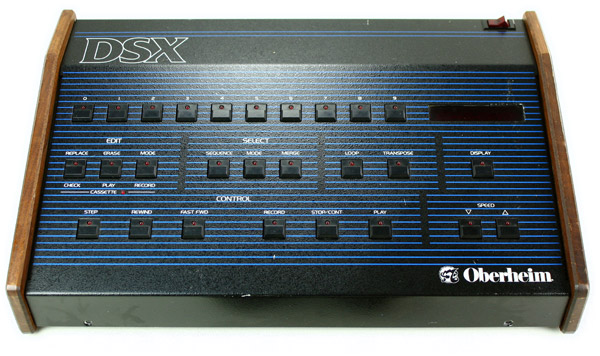
Oh yeah, I got to play with synths on my 2009 album Brown & Orange. Hanna Silver had a retro Korg with some delightful presets. The most notable use was this track, which was always a bit of a messy record favourite.
And now, the original column from 2011 followed by some recent examples of my favourite arpeggiated synth based tunes, featuring the likes of Daft Punk, Beach House and Gorillaz. You can make your own arpeggiated sequences on this Online Sequencer if you wish. Dig.
TREBLE TREBLE // POPCORN AND INFINITY (2011)

My first memory of music is listening to Popcorn by Hot Butter. I’m standing beside Nan and Pop’s ‘Stereo Sonic’ entertainment deck with black sponge headphones wrapped around my noggin. I load a cassette into the deck and press down on the chunky metallic button. The oceanic tape hiss fills with a sci-fi whine, followed by a warbly synth waddle of baroque alien ducks and the novelty combustion of a robotic, whistle-ready melody.
I sit mesmerised, staring at a yellow and brown swirl print cushion. These sounds are colour to a blind man. An aurora to a caveman. A Christmas and birthday imagination sandwich. Cerebral sorcery that fits like a tshirt and springs like a trampoline. Music was shaking hands and asking to be my friend.

The song continues, the pad chord bed hitting the profound F#m. The vibrations enter my ears like molten fireworks then vapourise, leaving puffs of awe. Popcorn, at once silly and profound, is a Moog minstrel with a weeping heart. The jaunty lead tickles my chin while the broody rhythm of the bridge places a steady hand on my chest. The song is trying to tell me something.
At 1:08, something incredible occurs. The carriage of the song slips off its rails and sails into the air, gliding on a glitteringly gorgeous magic carpet of harpsichord and arpeggiated minor chords. The chords are broken down to their base notes and knitted back together to form a musical spine which flexes and flickers, like the tail of an electric dragon. The sonic flux swings and snakes, mirroring the waves and mountain tops of a stereo equaliser. The luck dragon cycles its way through the dazzling axis of my mind. Lava coated flowers burn red, blue then yellow. My LCD creature zips and darts, spelling mathematical shapes before exploding into rainbows and lightning rods.
After this uplifting bridge the song breaks down into the tribal simplicity of tom drum and tambourine. An anxious two-note timer synth creeps in, adding a sense of urgency. Each layer of instrumentation is cleared, leaving only the ticking of a laser clock, soon blotted out by the squelch of Martian flatulence. It is at once comical and menacing. The sound of a spaceman being obliterated in a Commodore 64 game.
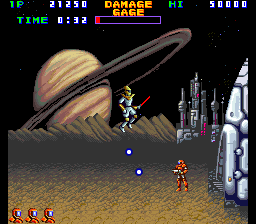
I take off the headphones and gaze at the rows of tapes and photo frames, my head slowly morphing back into shape like ear plug foam. What is this “music?” This kaleidoscope of sounds. I am caught hook, line and syncopation.
My second memory of music is listening to I Just Called To Say I Love You by Stevie Wonder. For this six year old, the song is trumped by the micro-single which opens the tape. The XDR Test Toneburst that sits at the beginning of cassette albums from the era. An audio distress flare sounding out the basic spectrum of tones from sub bass to high treble. An arpeggiated fantail for my brain to decode.
The song plays. I am drawn to the warmth of the synths, blending sweetly with the early 80’s compression and Wonders rich voice. Listening back, I detect lightly arpeggiated notes in the mix, adding a mystical, tinkling ambience – crystal rain on glass. (A similar effect to The Never Ending Story.) The song has a lightweight of melancholy I am drawn to, and while my emotional palette is primitive, my synaesthesiac instincts associate the thick pad of the minor chords with a quiet internal warmth, as my heart increases the blood flow around my body, sending a rainstorm of thoughtfulness to my tummy.
Being a child of the 80’s, it’s little wonder my earliest memories of music are mostly synthesiser based. A glance at the children’s programming of the time shows cult classics such as Ulysses 31 and Mysterious Cities of Gold using the kind of synth-heavy soundtracks that Gary Numan could take back to his laser pyramid. I recently rewatched Mysterious Cities of Gold and found to my delight that not only had the animation aged gracefully, but the soundtrack was a full bodied tremolo dreamscape.
One of my first cinema memories was the opening credits to The Never Ending Story, featuring the title track playing while the camera tracked over dreamy clouds. While the single already contained brilliant melodic structure and a rousing chorus, my brain was excited by the arpeggiated bed, sublimely oscillating in the background like robo piano roll. Coupled with the epic adventure of the film, The Never Ending Story made me want to melt from happiness and sadness all at once. Add the prettiness of the childlike empress, the savagery of the wolf and ARTAX! and you have an original sex and death soundtrack with training wheels.
A few years later, in 1990, I would accidentally bump into the greatest arpeggiated synth sequence of all time. The song was called Infinity by the UK artist Guru Josh. The song revolved around a melody played on saxophone utilising a stirring F-C-G chord sequence similar to that found in Manic Street Preacher’s If You Tolerate This, Live’s Lightning Crashes and Scatman John’s Scatman.
Behind the sax are heavenly orchestral pad synths punctuated by a subtle oscillation of notes, brilliantly complimenting the chord sequence but not yet fanning all the hues to its peacock tail. It’s an ambitiously anthemic and acutely ambient opening, especially when listened to through earnest young ears.
The verses comprise of Guru Josh staking audacious claim to the entire decade “1990’s – time for the guru” backed by some industrial Terminator-esque effects and scattershot house beats. A looming three note bass line keeps the track in check while Guru Josh scats some ‘oohs’ and ‘aahs’ landing somewhere between Max Headroom, Kraftwerk and David Koresh.
At the two minute mark of the extended mix we are treated to a twenty second burst of what I have, for most of my life, accepted to be the greatest section of music ever recorded. The chorus chords are reprised with an arpeggiated lead running brightly over the top. The stirring ambience of angelic electro wash, flush with a dramatic major to minor chord change are punctuated with a constellation of digital train tracks whose rise and fall evoke the exotic quasars of my spatial awareness. It’s like a squadron of effervescent sprites line my kinetic pathways, waving brilliant sonic pom poms as I run a victory lap around my swirling fantasia – the music shining a neon blacklight on the dream bursts of my mind’s eye – a cross between the last rainbow level in Mario Kart, the time travel scene from 2001: A Space Odyssey and a Flaming Lips concert.
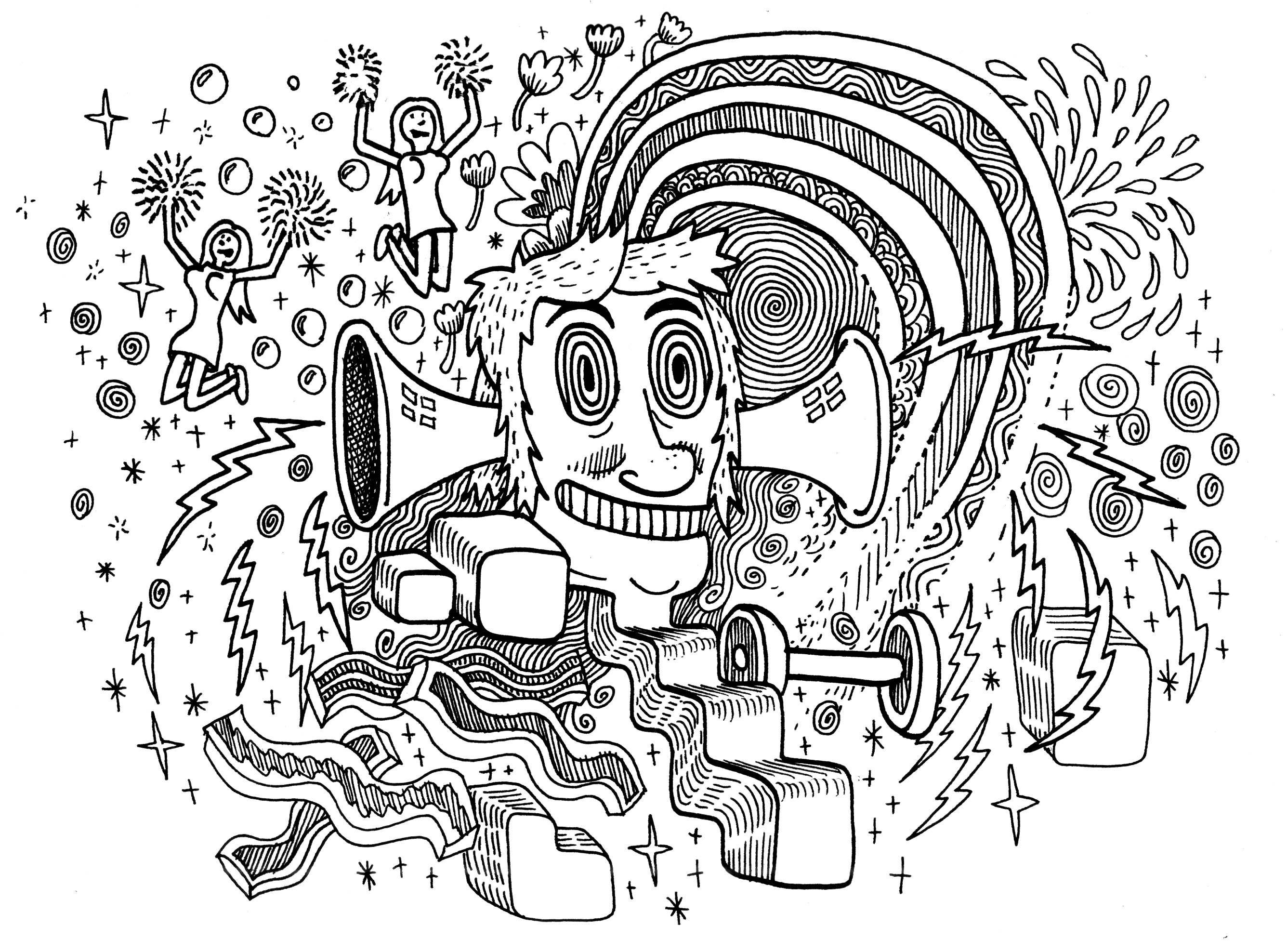
The reverb on the mix evokes an underwater dream – the audio equivalent of bubbles bursting as they rush to the surface. It is not dissimilar to Caribou’s Sun at the 3:40 mark, from a house album he wanted to sound organically underwater. Infinity creates a magic speedway inside my imagination where natural and synthetic are one. Circuits become veins and stars turn to pixels. I am the king of colours – flying through a psychedelic utopia, smelling the freshness and licking tears from my lips.
For a period of my teenage years, Infinity was my drug. I would slip on the earphones, press play on my walkman and escape. I lived for the arpeggiated section, and thankfully, after an astoundingly lengthy (2:05!) piano solo, Infinity offers a sixty second outro of the enchanting sequence, spiralling skywards before dipping and dissipating into a mushroom cloud of ambience.
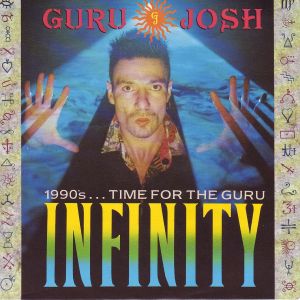
I was finding my own non-druggy relationship between electronic dance music and hallucinating. During car trips, I’d disappear into deep trances, triggering the stained glass screensaver of my mind. In grade ten I fully explored this concept with a short film I wrote called Infinity. The story revolved around a DJ who believed that if you took the live speaker wires and inserted them directly into the brain, while high on a certain drug, you could physically transform and “become the song.” (It was not long after The Lawnmower Man where the protagonist became pure energy via virtual reality). In the final scene two investigators burst into the DJ’s compound (bed-sit) to find he has been successful with his experiment. On his bed burns the infinity symbol, rendered in blue flames.
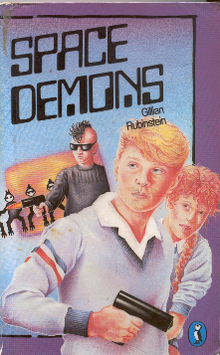
What I was expressing was my deep desire to completely connect with electronic songs like Popcorn, The Never Ending Story, Infinity and whatever was happening on my Strictly Techno 2 cassette. I wanted to trip as hard as I could, powered by my imagination and a box of Nerds. Like in the book Gillian Rubenstein’s Space Demons where the characters are trapped inside a video game, I wanted to be sucked inside these songs – able to fly along the sonic dimension they existed within. I could hear and see music, I wanted to be able to touch, taste and smell it as well. I don’t think many other people my age wanted to smell anything to do with Guru Josh. He had a goatee and always looked sweaty. (I later discovered he fell out of favour after publicly supporting Thatcherism).
My love of arpeggiated synths continues to this day, and I’ve been drawn to it in recent alt-rock tracks such as Grandaddy’s The Crystal Lake, Wilco’s Heavy Metal Drummer and the music of Ratatat. I’ve used it on one of my own songs For The Love I Have For You, to moderate success, but have resisted the urge to buy my own keyboard. I fear that once I find the arpeggiation settings and put on the cans, I’ll swim down a sonic wormhole of no return.
FURTHER LISTENING — A PHOENIX DOUBLE HELIX
 The Gorillaz Plastic Beach features an arpeggiator drop so satisfying that the comments reference the 0:41 point of the song!
The Gorillaz Plastic Beach features an arpeggiator drop so satisfying that the comments reference the 0:41 point of the song!
When you’re sleeping and your body does that fake fall thing
When you’re playing Rock paper scissors in the mirror and you win.
Gorillaz // Plastic Beach
Slow Meadow // Artificial Algorithm
DIG ON THE FULL PLAYLIST…
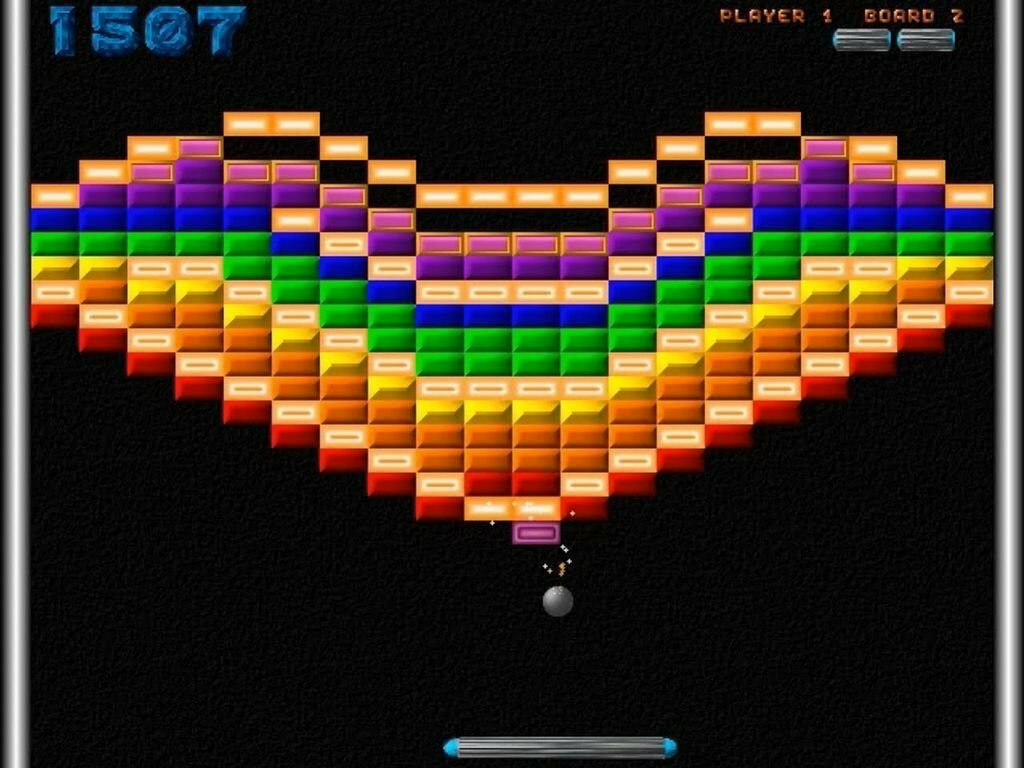
* Rage Against The Machine made their guitars sound like electronic effects, and each album contained in the liner notes “no samples, keyboards or synthesizers used in the making of this record.”
CONTINUE READING:
- Another musical deep drive on Aimee Mann.
- A tribute to listening to music on your lonesome All By My Shelf.
- You can check the three other music columns on Radiohead, Selling Out & Sex in Indie Music here.